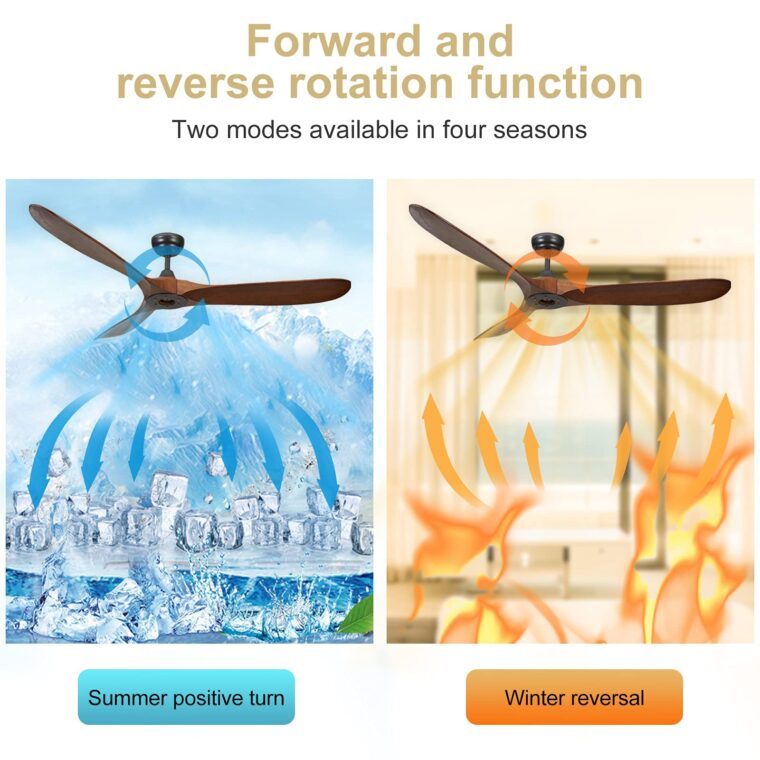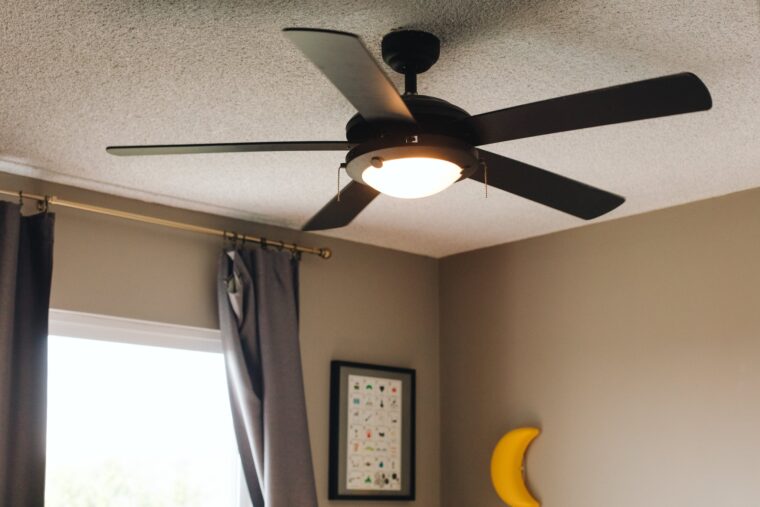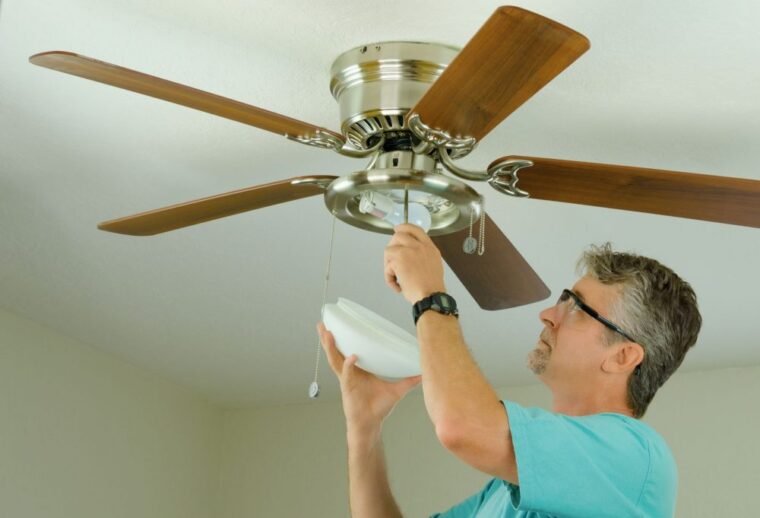Ceiling fans are a wonderful addition to any space, providing a refreshing breeze during the sweltering summer months and aiding in maintaining a comfortable environment year-round. However, did you know that the direction in which your ceiling fan rotates can greatly impact its effectiveness? In this article, we will explore the proper direction for ceiling fans and how it can enhance both your comfort and energy efficiency.
Counterclockwise Rotation for Summer

During the summer, when temperatures soar and air conditioning bills rise, setting your ceiling fan to rotate in a counterclockwise direction is crucial. This direction creates a downward airflow, generating a wind chill effect that cools the occupants of the room. When the fan blades spin counterclockwise, they push the air downwards, creating a breeze that can make you feel up to 4 degrees Fahrenheit cooler. This cooling effect allows you to set your thermostat a few degrees higher while maintaining the same level of comfort, reducing your reliance on air conditioning and potentially lowering your energy consumption.
To ensure that your ceiling fan is set to rotate counterclockwise during the summer, stand beneath the fan and observe the direction of the blades. If they move in a clockwise direction, you will need to adjust the fan’s switch, usually located on the fan’s motor housing. Most fans have a switch that allows you to change the rotation direction, ensuring optimal cooling performance.
Clockwise Rotation for Winter

Contrary to popular belief, ceiling fans can also prove beneficial during the colder months. When the weather turns chilly, setting your fan to rotate in a clockwise direction is essential. This reverses the airflow and creates an updraft, redistributing warm air that naturally accumulates near the ceiling. By running your ceiling fan on a low speed in the clockwise direction, you can gently circulate the warm air trapped at the top of the room down to the living space, effectively improving heat distribution and reducing the workload on your heating system.
To determine if your ceiling fan is rotating in the proper direction for winter, stand beneath the fan and observe the blades. If they move in a counterclockwise direction, you will need to adjust the fan’s switch to change the rotation direction. This simple switch adjustment can help you make the most of your heating system and keep you cozy during the colder months.
Year-Round Benefits and Energy Efficiency

Setting your ceiling fan to the proper rotation direction not only enhances comfort but also improves energy efficiency throughout the year. By utilizing ceiling fans in conjunction with your heating and cooling systems, you can optimize their performance and potentially reduce energy consumption.
During summer, using a ceiling fan in conjunction with your air conditioner allows you to raise the thermostat setting by a few degrees without sacrificing comfort. This can result in substantial energy savings. The wind chill effect generated by the counterclockwise rotation of the fan creates a cooling sensation on your skin, making you feel more comfortable even at slightly higher temperatures.
In winter, the clockwise rotation of the fan helps distribute warm air that naturally accumulates near the ceiling. By effectively circulating the warm air downwards, you can maintain a more consistent temperature throughout the room and reduce your reliance on heating systems. This, in turn, may lead to energy savings by allowing you to lower the thermostat setting without compromising comfort.
Optimizing the direction of your ceiling fan rotation can greatly impact your comfort and energy efficiency throughout the year. During summer, a counterclockwise rotation creates a cooling breeze, allowing you to raise your thermostat setting while maintaining comfort. In winter, a clockwise rotation redistributes warm air, improving heat distribution and potentially reducing the workload on your heating system. By understanding and utilizing the proper fan rotation directions, you can enhance your indoor climate control and potentially save energy.
So, take a moment to check the direction of your ceiling fan and make any necessary adjustments. By harnessing the power of your ceiling fan’s rotation, you can create a more comfortable and energy-efficient living space for yourself and your loved ones.
